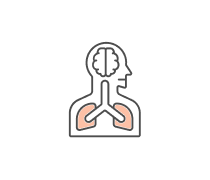Poster/o???
Proxim/o???
Sacr/o???
Sarc/o
Spin/o???
Thel/o???
Umbilic/o???
Ventr/o???
Vertebr/o???
Viscer/o???
Meta-???
Inter-
Hypo-???
Epi-???
Ana-???
Cata-???
-eal, -iac, -ior all mean pertaining to???
-ism???
-type???
-somes???
-plasm???
-ose???
Abdomen???
Fat???
Anterior, front???
Cervical, neck???
Cartilage???
Color???
Coccyx, tailbone???
Skull
Cell???
Distal, far, distant??
Dorsal, back side of the body???
Tissue???
Ili/o???
Groin???
Nucleus???
Side???
Lumbar, lower back???
Middle??
Trachea, windpipe???
Chest???
Internal organs???
Vertebra, vertebrae???
Anterior, ventral, front side of the body???
Belly button, navel???
Nucleus???
Back side of the body, dorsal ????
Nearest, Proximal???
Sacrum???
Flesh???
Spine, backbone???
Nipple???
Pelv/i???
Pelvis??
To cast, throw???
Bol/o???
Change???
Between???
Low???
Above???
Up?
Cata-???
Picture, classification???
Process, condition???
Bodies???
Formation???
Pertaining to, full of ???
Makes protein for the cell???
Moves materials around the cell????
It contains water and nutrients for the cell??
Break down food and release energy to the cell???
Not only surrounds and protects the cell but also regulates what...
Controls the operations of the cell.. It directs cell division and...
The cell is the fundamental unit of all living things( animal or...
Are rod like structures within the nucleus???
Chromosomes contain regions called genes.. Is this a true or false...
Each gene is composed of a chemical called DNA.. Is this a true or...
Small, sausage shaped bodies???
Network of canals within the cell???
The test counts the number of chromosomes and can identify any that...
Each egg cell nucleus has how many chromosomes????
Each sperm cell nucleus has how many chromosomes???
How many chromosomes does one person have???
Control center of the cell???
The total of the chemical processes in a cell???
The medical term for internal organs????
Process of building up complex materials( proteins) from simple...
Process of breaking down complex materials( foods) to form simpler...
A tissue is a group of similar cells working together to do a specific...
A scientist who specializes in the study of tissues???
Located all over the body, forms the linings of internal organs, and...
Voluntary muscle is found in arms and legs and parts of the body where...
Involuntary muscle is found in the heart and digestive system, as well...
Is a specialized type of muscle found only in the heart???
Examples are Adipose( fat tissue) and cartilage??? Name the type of...
Nerve tissue conducts impulses all over the body??? Is this a true or...
Organs are structures composed of several types of tissue.. Is this a...
Systems are groups of organs working together to perform complex...
Material of the cell located outside the nucleus and yet enclosed by...
Regions of DNA within each chromosome???
Small, sausage shaped structures; the place where food is burned to...
Canal- like structure in the cytoplasm; the site of protein synthesis?
Structure that surrounds and protects the cell???
Control center of the cell, containing chromosomes???
Chemical found within each chromosome???
Rod shaped structures in the nucleus that contain regions called...
A picture of chromosomes in the nucleus of a cell is a???
The number of chromosomes in a normal male's muscle cell???
The number of chromosomes in a female's egg cell is???
Tube leading from the urinary bladder to the outside of the body???
What is the medical term for womb????
Endocrine gland surrounding the windpipe in the neck???
Surface cells covering the outside of the body and lining internal...
Flexible connective tissue attached to bones at joints???
The medical term for windpipe???
Endocrine organ located at the base of the brain???
Collection of fat cells???
Tube from the kidney to the urinary bladder???
What is the medical term for throat???
Membrane surrounding the lungs???
The medical term for voicebox???
Cavity surrounded by the skull???
Cavity in the chest surrounded by the ribs???
Cavity below the chest containing the stomach, liver, and...
Cavity surrounded by the hip bones???
Cavity surrounded by the bones of the back???
Region of the neck???
Region of the chest???
Region of the waist???
Region of the sacrum???
Region of the tailbone???
Membrane surrounding the abdominal organs???
Space surrounding each lung???
Intervertebral disk is a pad of cartilage between each vertebra.. Is...
The muscle separating the abdominal and thoracic cavities??
Space between the lungs???
Opposite of deep???
Opposite of Proximal???
Opposite of Supine???
Opposite of medial???
Opposite of dorsal???
Opposite of superior???
What is a craniotomy???
What is a chondroma???
What is chondrosacroma???
What does nucleic mean?????
Pertaining to the windpipe????
Pertaining to the neck???
Pertaining to internal organs????
On the back???
On the belly???
What is Supine???
What is Prone????
Means groin??? What region????
RUQ stands for???
LUQ???
RLQ???
LLQ???
Neck region???
Chest region???
Region of the sacrum???
A single backbone???
Bone tissue surrounding the spinal cavity???
Nervous tissue within the spinal cavity???
Front surface of the body???
The back side of the body???
Another word for posterior is???
Away from the surface???
On the surface???
Near???
Far???
Below another structure???
Above another structure???
Means middle???
Means side???
Lying on the back
Lying on the belly???
Vertical plane dividing the body or structure into anterior and...
The Frontal plane is also called the???
Lengthwise vertical plane dividing the body or structure into right...
The Sagittal plane is also called the???
Divides the body or structure into upper and lower portions???
The Transverse plane is also called the???
Abdomin/o???
Adip/o???
Anter/o???
Cervic/o???
Chondr/o???
Chrom/o???
Coccyg/o???
Crani/o???
Cyt/o???
Dist/o???
Dors/o???
Hist/o???
Ili/o???
Inguin/o???
Kary/o???
Later/o???
















